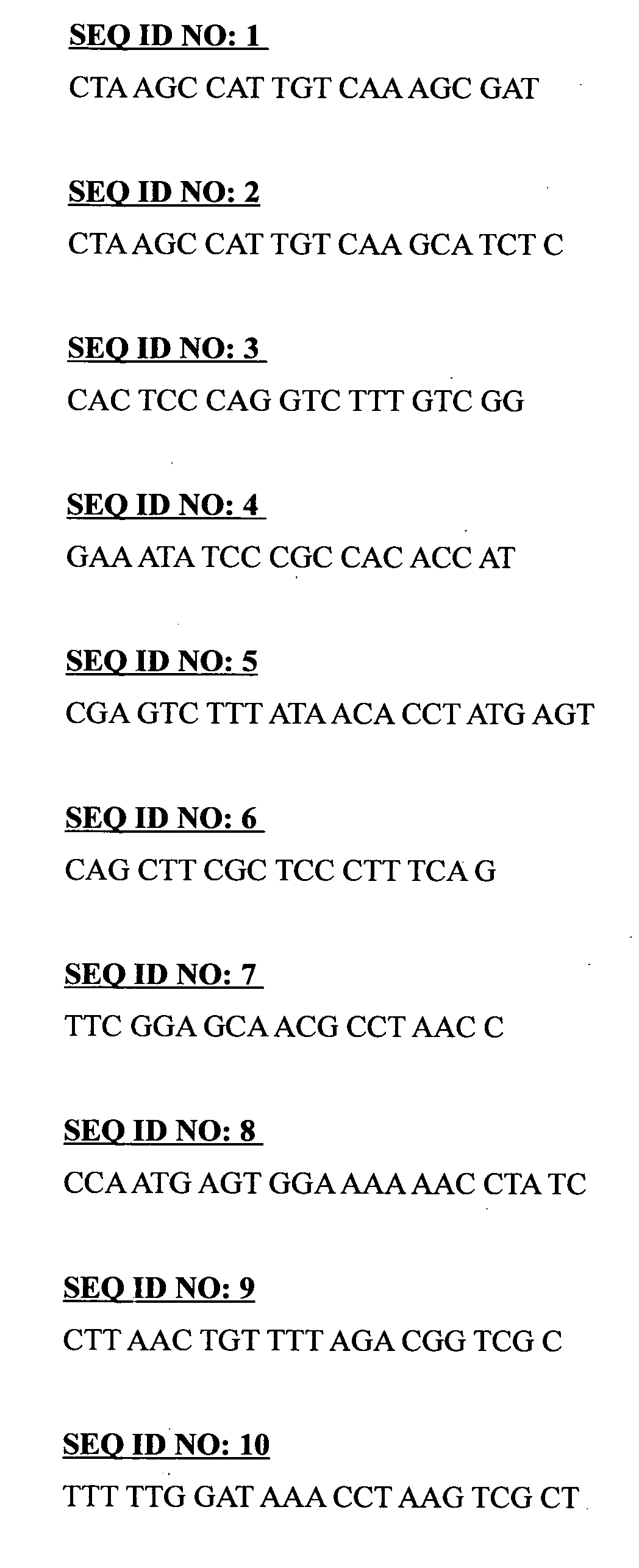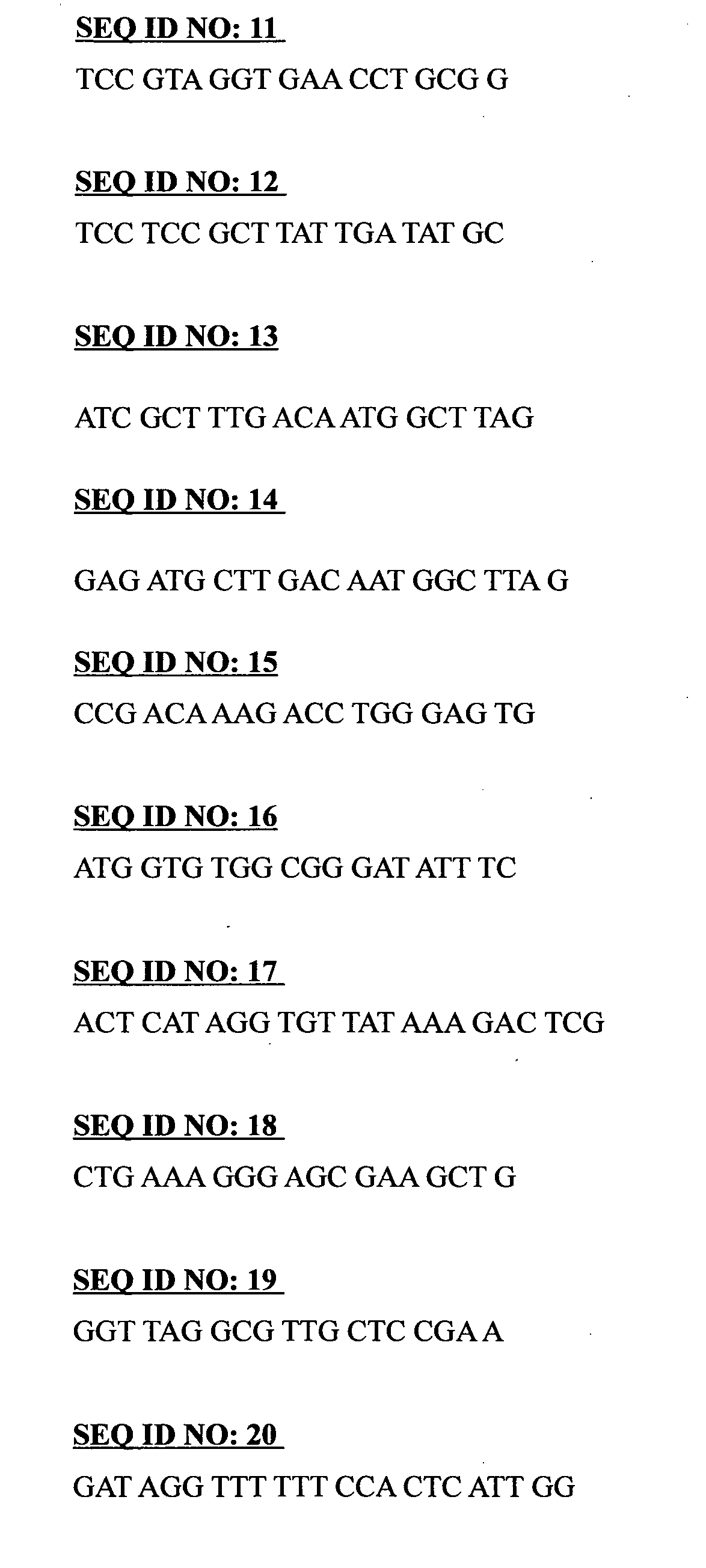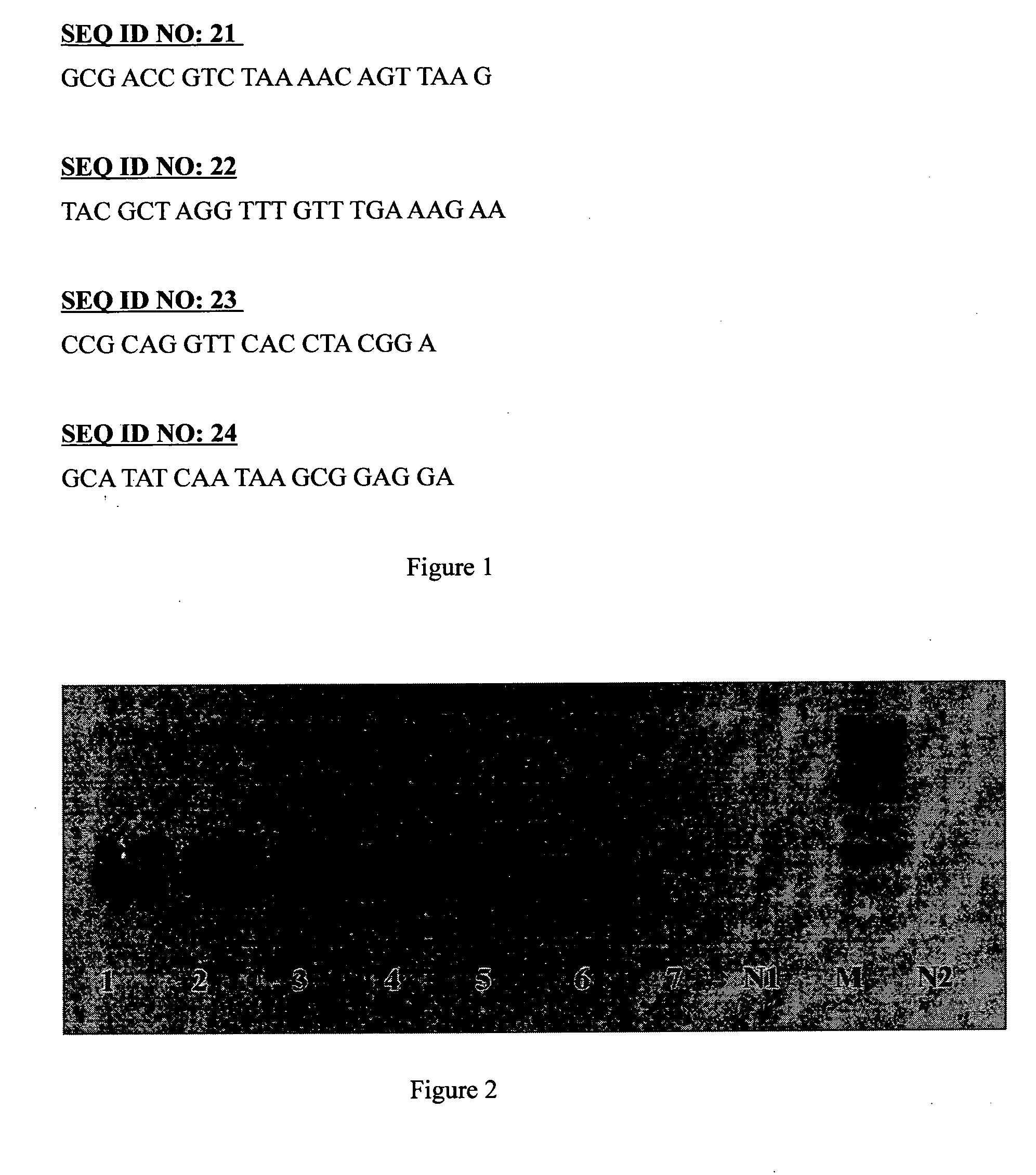Method for detecting and identifying candida species
a technology for applied in the field of detecting and identifying candida species, can solve the problem of increasing the incidence of infection cases, and achieve the effect of increasing the sensitivity of the assay
- Summary
- Abstract
- Description
- Claims
- Application Information
AI Technical Summary
Benefits of technology
Problems solved by technology
Method used
Image
Examples
example 1
ATCC Strains and Clinical Isolates
[0084]All the ten Candida species were purchased from American Type Culture Collection (ATCC). They were used as reference strains. Twenty-six clinical isolates of ten different Candida species were tested.
example 2
Growth Condition and DNA Extraction
[0085]Candida cells were grown in 3 mL of Sabouraud Dextrose Broth (SDB) at 37° C. overnight in a shaking incubator till they reached mid-log phase. Broth culture that contains the Candida cells were used for DNA extraction. Genomic DNA of the Candida cells were extracted using conventional phenol-chloroform extraction method. The cells were washed twice with 1 mL of phosphate buffered saline (PBS), pH 7.4 by centrifugation at 13,200 rpm for 2 minutes. The cell walls were broken down by adding 500 μL lysis buffer (1 M Tris-HCl, 0.5 M EDTA, 0.5% v / v β-mercaptoethanol) at 37° C. in a shaking incubator. The cells were later lysed to release the DNA from the nucleus by adding 50 μL of 10% sodium dodecyl sulfate (SDS) and the cell debris were denatured using 2.5 μL 20 mg / mL proteinase K. Equal volume (approx. 553 μL) of phenol: chloroform: isoamyalcohol was added to separate the DNA from histones and protein. Released DNA were precipitated and concentra...
example 3
Polymerase Chain Polymerase
[0086]Eppendorf Mastercycler® gradient PCR machine was used for the DNA amplification process. The reaction mixture for polymerase chain reaction (PCR) consists of PCR buffer, magnesium chloride (MgCl2), deoxynucleotide triphosphates (dNTPs), forward primer and reverse primer and Taq DNA polymerase enzyme. All the PCR reaction ingredients are from Fermentas Life Sciences. The first round of PCR was carried out using the primers SEQ ID NO: 11 TCC GTA GGT GAA CCT GCG G and SEQ ID NO: 12 TCC TCC GCT TAT TGA TAT GC. Table 1 shows list of primers used in the first and second round of the semi-nested PCR process. The PCR reaction mixtures for the first round of PCR, using SEQ ID NO: 11 and SEQ ID NO: 12 as primers are shown in Table 2 whereas the PCR program is shown in Table 5, respectively. For the second round PCR depending on the species, the SEQ ID NO: 11 remains and ten different species specific reverse primers for the respective species (SEQ ID NO: 1, 2,...
PUM
| Property | Measurement | Unit |
|---|---|---|
| Temperature | aaaaa | aaaaa |
| Temperature | aaaaa | aaaaa |
| Temperature | aaaaa | aaaaa |
Abstract
Description
Claims
Application Information
 Login to View More
Login to View More - R&D
- Intellectual Property
- Life Sciences
- Materials
- Tech Scout
- Unparalleled Data Quality
- Higher Quality Content
- 60% Fewer Hallucinations
Browse by: Latest US Patents, China's latest patents, Technical Efficacy Thesaurus, Application Domain, Technology Topic, Popular Technical Reports.
© 2025 PatSnap. All rights reserved.Legal|Privacy policy|Modern Slavery Act Transparency Statement|Sitemap|About US| Contact US: help@patsnap.com



